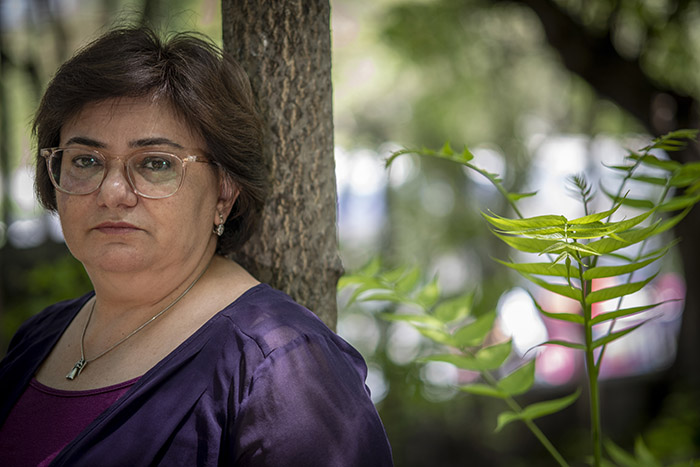This interview was organised by Human Rights House Yerevan for the third edition of the “Portraits of Strength” photo exhibition. The photo was taken by Nazik Armenakyan in Yerevan, Armenia, July 2024.
Why did you become a human rights defender?
“I have always had a heightened sense of justice. I remember at a young age it was baffling to me when I was told that I could not do certain things because I was a girl or that I could not play with boys. I have always fought for justice.”
The realisation that, irrespective of our differences, all human beings are created equal and should enjoy the same human rights is when I first perceived myself as a human rights defender.
“Later, I educated myself about these issues and became increasingly convinced that there should be no reason why people shouldn’t equally enjoy the same human rights and fundamental freedoms. One may be considered as a human rights defender when they are fighting for human rights for all, and it is in that process that you understand that while fighting for equal rights for everyone, you are also fighting for yourself.“
What is the nature of your work and what challenges do you face as a Woman Human Rights Defender?
“For the period of 2008-2020, our organisation worked on women’s rights issues in Nagorno-Karabakh, and we were forced to move to Armenia [following the Second Karabakh War]. When we first started our work, we were using words that were uncommon in the parlance of Nagorno-Karabakh at that time; instead of “patriotism” and “victory,” we were speaking about women’s rights, rights of LGBT people, and we could see that people didn’t quite understand it.”
“We were accused of giving “too much power” to women because men are afraid of seeing women become stronger. In societies like ours, women are targeted, and women human rights defenders even more so.”
What is the current human rights situation in your country?
“Currently, our organisation is dealing with the issues of [forcibly] displaced women from Nagorno-Karabakh. Domestic violence, which has increased in the aftermath of the war, is a real issue, and unfavourable housing conditions that women find themselves in only exacerbate the situation. Providing psychological aid to internally displaced women is also important, but such support is not always available; as usual, women often sacrifice their well-being for that of their husbands and children. These issues, as well as socio-economic challenges, are our primary focus.”
Along with these concerns, as women from Nagorno-Karabakh, we are facing immense uncertainty regarding our future and our status in Armenia. We are neither citizens of Armenia, nor refugees in this country.
What kind of human rights situation in your country would you like to see in the next 30 years?
“And what do you mean by ‘my country?’ I have lost my country [she continues, giving a sad smile]. We have found ourselves in Armenia, and we need time to get adjusted to the new realities.”
“What I hope to see in Armenia in 30 years is the disappearance of the gap between the human rights situation on paper and in real life. But Armenia isn’t the only society that I am thinking of when I contemplate about the future. For that other society [Nagorno-Karabakh within Azerbaijan] the reality that I would like to see is one where I can live as an Armenian first and as a woman, second.”
Can you describe your motivation to be a human rights defender?
“To raise a generation of kids that thinks about peace, not war.”

About Portraits of Strength
Women human rights defenders (WHRDs) work to protect and advance freedoms while facing discrimination and stereotypes about their role and participation in society.
HRHF seeks to honour and promote independent women human rights defenders and their work through the “Portraits of Strength: Women Defending Human Rights” photo exhibition and highlight the human rights situation in the countries of the Network of Human Rights Houses.
The exhibition, now in its third edition, shares portraits and stories from WHRDs working on a variety of issues including the documentation of human rights violations and alleged war crimes, rule of law, women’s rights, political prisoners, freedom of expression, and more.
Find out more here.





